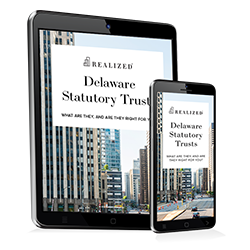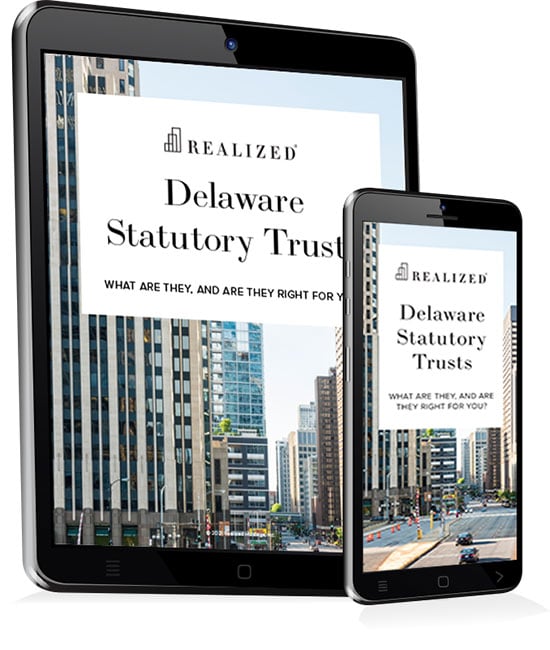
At some point in your investment journey, you may want to take a step back from the burdens of management and enjoy your income without any added effort. Thankfully, there are various strategies to achieve passive real estate investing, and one that’s risen in popularity is the Delaware Statutory Trust (DST). This investment vehicle not only provides tax-deferral benefits, but responsibility over daily management and major capital decisions falls on the sponsor. These advantages make DSTs a powerful tool for certain types of inventors.
In this article, Realized 1031 dives into the concept of using DSTs to transition from active to passive real estate investing.
Recap of Delaware Statutory Trusts
DSTs are legal entities that own real estate assets, which generate income through activities like leasing. Investors own beneficial interests in the DST and receive income on a regular basis.
Since a DST can be eligible in a 1031 exchange, investors undergoing this transaction can finish it by acquiring DST interests. DSTs that provide tax-deferral benefits must adhere to various rules, such as those set by Revenue Ruling 2004-86. One requirement — that control is restricted to only the DST sponsor — creates the conditions that allow DSTs to become powerful passive real estate investments.
Reasons to Transition to DST Passive Investing
Having an active role in your portfolio is usually the default for many investors. This hands-on approach lets you understand how each asset works so you can experience the rigors of investing. However, at some point, you may find yourself with new priorities or in circumstances that make active management difficult.
- Burdens of Property Management: Handling building maintenance, tenant calls, and vacancies can be stressful and time-consuming.
- Time Constraints: You may need to dedicate huge chunks of your day to the properties, resulting in less time for other commitments.
- Risk Concentration: Direct property ownership is often the case for people who are actively managing real estate assets. This type of ownership may increase risk if vacancies or market downturns occur.
Passive investing allows you to take a step back and let others take on the burden for you. As you reduce your personal involvement, you can dedicate your time and efforts to more important matters. Even though you’re no longer playing an active role, you still enjoy a steady income stream.
Streamlining Investment Transitions
Among the various choices you have for passive investing, why DSTs in particular?
- Professional Management: DSTs are controlled by sponsors, who are usually established real estate investment firms. As you free yourself from landlord responsibilities, you can be confident that you’re handing over the reins to professionals who understand how to make investments to increase their income.
- Tax-deferral Benefits: One common challenge that transitioning brings is that you can’t sell an asset without incurring capital gains taxes. Thankfully, 1031 exchanges, which are tax-deferred transactions, can be completed by entering DSTs. You get to dispose of your old property and acquire a new asset while still preserving your wealth.
- Diversification: Instead of concentrating wealth in a single property, investors can spread capital across multiple DSTs in different asset classes and geographic regions. This strategy ensures that, even though you’re earning income passively, you still have a cushion against market volatility.
- Predictable Income Stream: Most DSTs focus on stable, income-producing assets, giving investors consistent cash flow without the unpredictability of hands-on management.
Wrapping Up: DST Passive Real Estate Investing
As your needs and lifestyle change, transitioning to passive investing using DSTs can be a strategic move. You enjoy professional management, tax-deferral benefits, and enhanced diversification while easing the burden of active management.
Sources:
https://www.irs.gov/pub/irs-news/fs-08-18.pdf
https://smartasset.com/investing/direct-vs-indirect-real-estate-investment



